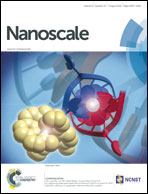Exceptional performance of a high voltage spinel LiNi0.5Mn1.5O4 cathode in all one dimensional architectures with an anatase TiO2 anode by electrospinning
Abstract
We report for the first time the synthesis and extraordinary performance of a high voltage spinel LiNi0.5Mn1.5O4 fiber cathode in all one dimensional (1D) architecture. Structural and morphological features are analyzed by various characterization techniques. Li-insertion/extraction properties are evaluated in a half-cell assembly (Li/LiNi0.5Mn1.5O4) and subsequently in full-cell configuration with an anatase TiO2 fiber anode. In both half- and full-cell assemblies, gelled polyvinylidene fluoride-co-hexafluoropropylene (PVdF–HFP) is used as the separator-cum-electrolyte. All the one dimensional components used for fabricating Li-ion cells are prepared by a simple and scalable electrospinning technique. The full-cell, LiNi0.5Mn1.5O4/gelled PVdF–HFP/TiO2 delivered the reversible capacity of ∼102 mA h g−1 at 0.1 C rate with an operating potential of ∼2.8 V. Excellent rate capability and stable cycling profiles are noted for such a full-cell assembly with a capacity retention of ∼86% after 400 cycles.


 Please wait while we load your content...
Please wait while we load your content...